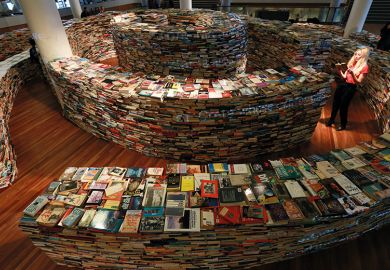Patrick Wright's Tank begins with the image of the solitary figure of Wang Weilin blocking the path of a line of Chinese tanks near Tiananmen Square in 1989. The image announces the central preoccupation of the book. Tank is not just a cultural history of the tank, it is also an extended essay on political culture; an investigation into the remarkable centrality of the tank in 20th-century political life.
Towards the end of his history, Wright visits Turkey on a trip funded by the British Council. After giving a lecture in Ankara, during which he showed slides of Tiananmen Square, he was approached by a man who described an image of a driverless tank sitting on a hillside, enclosed by a fence, and attended by a uniformed soldier. The tank, according to the man, had been "punished". In Turkey, it was suggested, machines were sometimes treated in this way if they had committed a wrong against the humans who have to deal with them.
Wright himself refrains from giving the tank human qualities, but his study does give agency and energy to the tank. Wright's tanks are not merely passive recipients of their crew's commands or of their designer's dreams, nor of the will of politicians and military strategists. They continually break down, drown and refuse to move in mud and snow. All too fre-quently, they crush the bodies of soldiers and civilians who stand in their path. Tragically, during the liberation of Rome in 1943, an American Sherman flattened an enthusiastic civilian reducing him to a mere "carpet of skin". Wright is a cultural historian and now a professor of cultural studies. But while many of his colleagues remain preoccupied by questions of ideology, discourse and representation, Wright weaves such concerns into a narrative that returns time and again, to the experience, organisation and effects of materials. He discusses at length the design philosophy of Israeli tanks and the fact that, for example, fuel supplies are placed in front of the crew to protect them. In writing about the use of tanks in the first world war, he dwells on the strange behaviour of the mechanical devices as they cross trenches and shell holes. At the end of the book, he writes of the physical experience of combat when he used a simulator in the United States Army Armor Center at Fort Knox.
Above all, Tank is a political history of a machine. Two themes recur. One is the significance of the tank's mobility and its association with what the historian Jeffrey Herf once called reactionary modernism. Wright dwells at length on the career of the British tank pioneer J. F. C. Fuller, his alienation from the interwar British military establishment and his eventual decision to join Oswald Mosley's fascists. Later he examines the remarkable longevity of the mythical image of Polish lancers charging German tanks in September 1939. Baroness Thatcher, commenting on Lech Walesa in her autobiography, noted: "I had realised now that I was not dealing with Polish cavalrymen." He encounters William S. Lind, head of the US Center for Cultural Conservatism, who criticises the US Army for its lack of interest in the mobility of armoured vehicles. The tank's capacity to move, to destroy and to disorganise became entwined with the development of 20th-century rightwing politics.
A second theme is the tank as a political icon. An early image is of Lenin driving to the Bolshevik headquarters in April 1917. "That armoured car," notes Wright, "was to become the symbol not just of the leader's return, but also of the unyielding and steely determination with which he proceeded to smash through gradualist social democratic ideas." Much later, in 1991, Boris Yeltsin reworked this image, addressing a crowd from a tank that found itself surrounded by a mass outside the White House in Moscow. In Wright's account, Tiananmen represents not just a moment in Chinese history, but one of a series of events, including the Prague Spring, which undermined the political authority of the tank.
In Britain, writing the history of technology has often been left to enthusiasts. Wright's book is an indicator of a broader shift in academic writing on technology. For Wright, the tank is not merely an object of specialist interest. Nor is it simply a vehicle with which to demonstrate the social construction of technology or the semiotics of material culture. Rather, the history of the tank is important to write because of its specific place in 20th-century political life. At the end of the book, Wright notes the increasing prevalence of quasi-armoured "sports utility vehicles" driven by the new urban gentry. Is the tank in terminal decline, rendered obsolete by the end of the cold war? Or has it mutated into a new and more ubiquitous form?
Andrew Barry is lecturer in sociology, Goldsmiths College, University of London.
Tank: The Progress of a Monstrous War Machine
Author - Patrick Wright
ISBN - 0 571 19259 9
Publisher - Faber
Price - £25.00
Pages - 499
